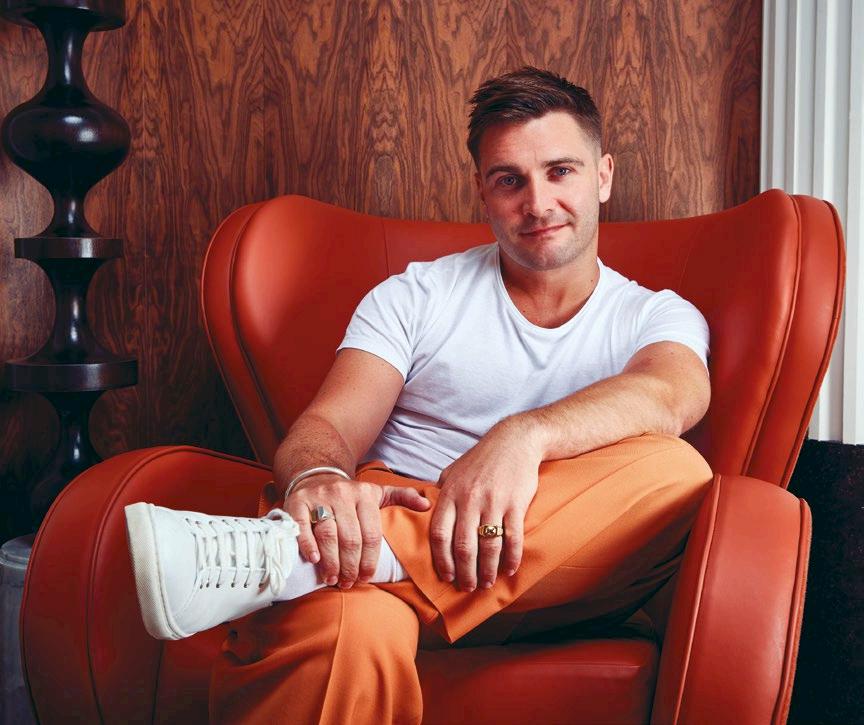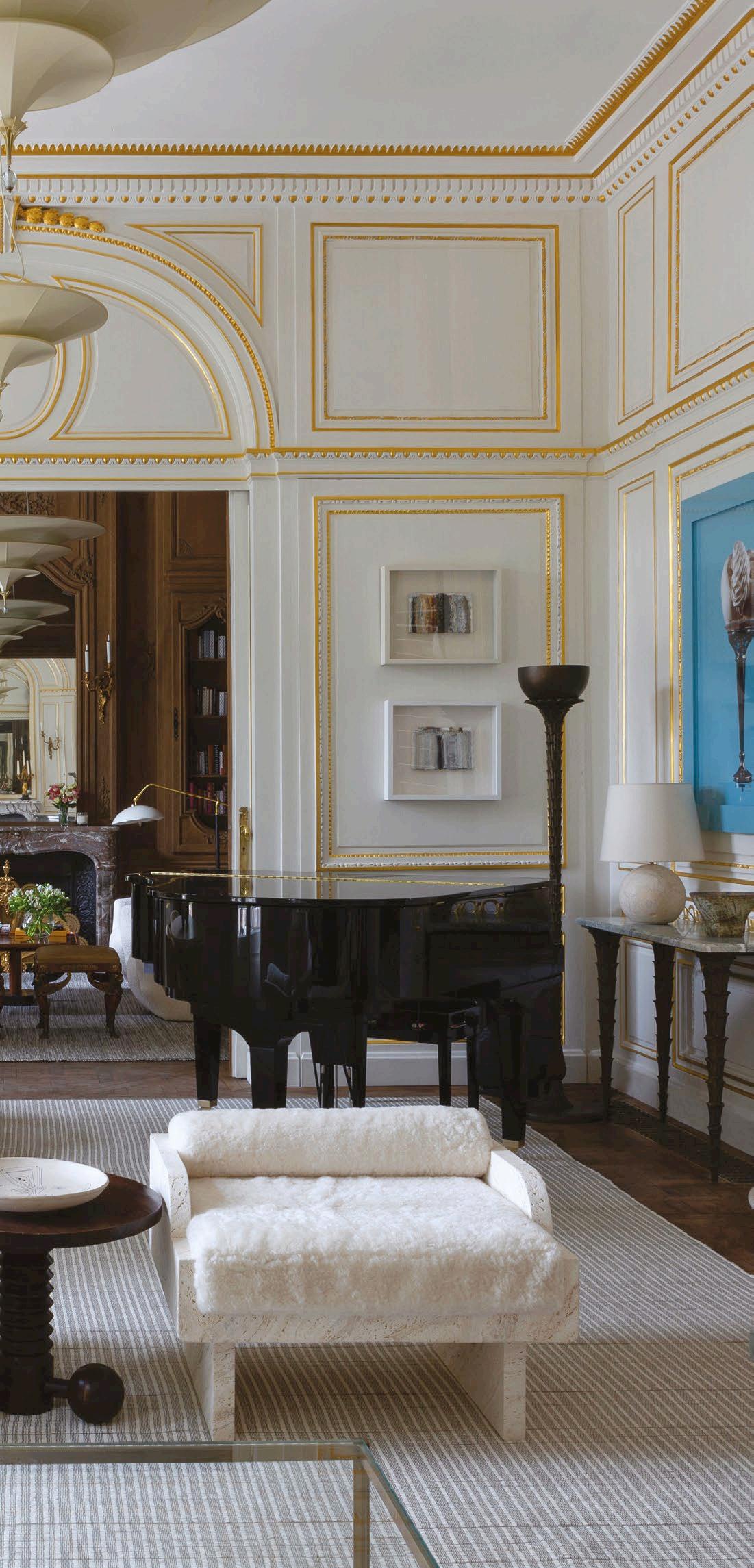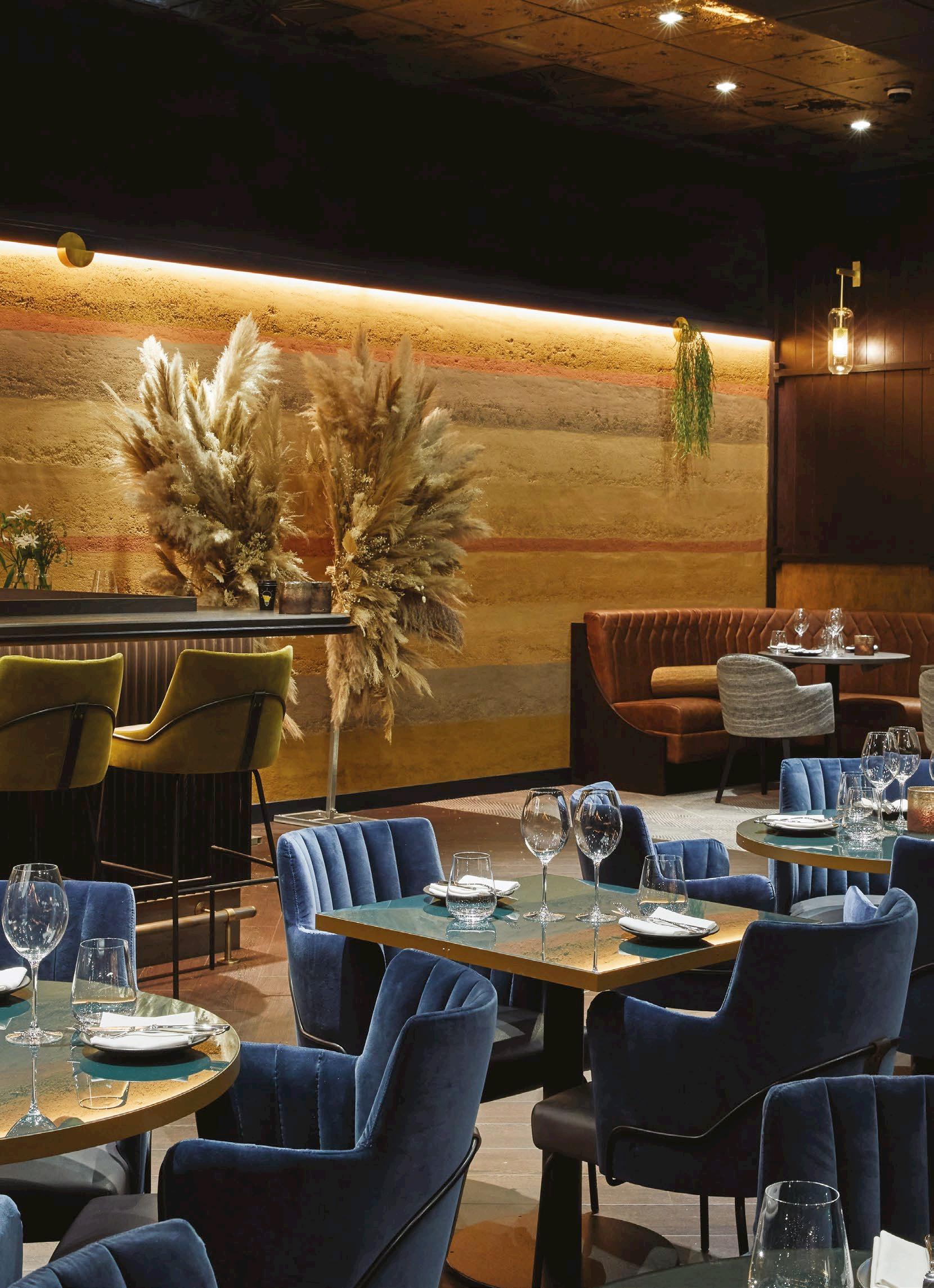
8 minute read
DESIGNER PROFILE: BRYAN O’SULLIVAN
DESIGNER PROFILE
BRYAN O’SULLIVAN
Advertisement
JADE TILLEY SPOKE TO BRYAN O’SULLIVAN ABOUT HIS CAREER SHIFT FROM POTENTIAL CHEF TO WORKING FOR SOME OF THE MOST PROLIFIC DESIGNERS ACROSS THE GLOBE BEFORE SETTING UP HIS OWN STUDIO IN 2013

Bryan O’Sullivan is the Founder of BoS Studio.
The Bryan O’Sullivan Studio design aesthetic brings together multiple influences to create places where people feel comfortable and at ease, while maintaining a sense of place. For Bryan and his collection of talented designers in the studio, the team is everything; they believe it’s important to draw from a breadth of expertise and inspiration, both for themselves as creatives and the clients. With a style that is compelling, elegant and timeless. the studio comes to each project with fresh eyes, resulting in original work that reflects its setting and is tailor-made for every project. Here, Bryan shares his stories of his granddad’s sketching skills and home intricacies, his father’s valued opinion as a former football coach and his mother’s influences in art and design, as well as his early influences in catering and hospitality.
What is your earliest memory of design having an impact on you? My Granddad was a draftsman and gifted drawer but was actually
a builder and entrepreneur. He trained as a draftsman in a firm and was really good at sketching so used to do a lot of scale plans. I remember doing baby versions of his work. He used to renovate churches so he had all these samples of stained glass windows. The first time I noticed design was then; he had this door handle in his house in this Swedish design – it was very cool and I remember it vividly. In Ireland in the 80s design wasn’t a huge deal and therefore not overly accessible. My granddad’s house was very different; it had salvaged panels, hand cut pieces out of doors with inset glass. My mum is very into art and design as well, so I grew up with that influence. I would visit friends’ houses whose parents would have the exact same house, which never changed. My mum was always updating and moving things, art was encouraged – painting and drawing. We were actually limited on TV, which of course, we were enraged about at the time as kids, but now my brother and I both work in the creative industries; my brother is a graphic designer.
Where did you study design and what did you specialise in? When I was really young I wanted to be a pilot, then I decided I wanted to be an architect but the points system was really high in Ireland so I didn’t even apply. My parents had restaurants and bars during my youth and were opening a new one when I was around 17/18. I was interested in chefing and hospitality management was the next choice, so I did that for a year. I then did a summer on a building site in New York. When I got back I applied to uni in the UK and got a place at Greenwich after taking a year out to work for a Dublin based furniture design company. In September 2002 I moved to London and have more or less been here since. I did my architecture Part 1 at Greenwich and then my Part 2 at Westminster. I took a gap year and worked in NYC for Annabelle Selldorf. Then during one summer I worked for David Collins Studio and when I finished University I returned to David Collins for a year. Following that I went on to work for Martin Brudnizki for three years. The advice I would give to any designer is to get about and get as many different experiences as you can. I have had some amazing opportunities to work with many different established designers. I was very lucky and they’ve all been great, but it’s important to get a variety of experiences as you can come across some horrendous bosses.
How has design education changed since you studied? In some ways it’s really hard to tell how it’s changed as I’m not there but I do have visiting tutor friends who keep me up to date and we have some great new talent coming into

the office. We are very inclusive and offer the chance for everyone to demonstrate how good they are. I’d say Millennials definitely have a different outlook, so attitudes have changed – they have no fear!
What kind of designer did you aspire to be and who are your inspirations? I am always inspired by Annabelle Selldorf and I loved working for her; her aesthetic, deep thinking and rootedness to concept. She is principled and her style is very apparent. I also really enjoyed working for David Collins – he was super talented and I got on so well with him. The way he could bring things together was so clever. He could make just a few tweaks and it would transform a space. Martin Brudnizki was a really nice boss, very driven and highly successful but has a great way of dealing with people. You pick up different things from different people that you would like to see in yourself, so these varied experiences really helped me form my own studio – it’s the bit that you don’t learn at Uni – business. Also, I must mention my parents. My dad was a teacher and my mum had coffee shops so I learned from them the simple principles of business, which was so helpful.
What was your first professional design commission? It was two villas in Ibiza, next to each other in Jesús, near Ibiza town. It was a development so we couldn’t go too far with our concept but it was an amazing starting point for us. It was initially just one project but we ended up doing about 14 projects with that client, including a yacht, main house, plane, ski chalet in Courchevel and commercial work! The chalet project was more personal for the client; it was a big project and was really rewarding at the end. Through this client we’ve also had referral work. Getting to know any client is a lengthy process, understanding each other takes time and at Courchevel we were very much still getting to know each other, so there were lots of challenges there.

What has been your biggest design commission to date? The one at the moment! A palace/country house/ hotel in Ireland, which backs onto the Rock of Cashel. It’s a Queen Anne Estate and we’re adding a spa and a new wing for bedrooms with the old stables being converted into bedrooms. The old school house is also being converted. This is a grand project of Georgian proportions; we are working with a local architect, local conservationist and five people from our team, as well as another interior designer being on board for about 25 per cent of the project.
environment where no one is afraid. To do this, we try to bring everyone into the circle and brainstorm together. We all sit together to discuss projects. My dad, the former teacher and football coach, comes in every four – six weeks, and, equating sport to business, he does one-on-ones with everyone in the office. It’s team building and he’s managed to pick up on a few areas of unhappiness and helps with our overall ethos. He’s like a counselor for our team in a way.
What are the key characteristics you look for when bringing new talent into your studio? I suppose that still the most important thing is drawing skills, as well as CAD, PhotoShop and Illustrator experience. Personality, it’s very much a question of ‘Are they a good fit?’ We are an office of 24, plus an office in New York because of our two large Hamptons projects at the moment. An exSelldorf friend is heading up the NYC office so actually we’re a team of 26 in total. I remember every time we’ve got bigger it’s always felt like a huge leap. Even going from Evelyn (Evelyn Conway, Director) and I to the third person felt huge, it was a massive deal to us.

Where is the majority of your work based? And how has travel helped to shape and influence your ideas on design? In Ireland for the last three years working on different areas, including my own wedding venue. We have some residential work in Dublin and Portugal, a hotel in the Faro resort, and one in Spain, yacht projects in Greece, an NYC project and then in London there are the big projects like the Berkeley, The Connaught and Claridges.
What do you think should be a key focus for designers moving forward in 2020? Regulations are tightening now, residential project standards have changed and they need to be met. Things such as open fires. I think Attenborough is really showing us what is happening and wherever we can, we will always aim to incorporate these better ways of working. For us as a studio, the team’s essence is super important, making sure people are happy is top of the list. Happy people create better results and when the projects are better, we are afforded the opportunities to make our team even happier.
If you hadn’t become an interior designer what would you be doing? I think I would be an hotelier or restaurateur. As I said, I was into chefing when I was younger and with my mum and dad working in that industry it’s in my blood.










